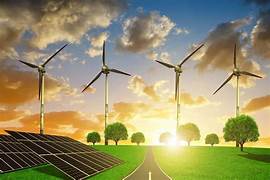Towards a Circular Economy with Plastic Waste Recycling
May 27, 2024 2024-05-27 8:22
Towards a Circular Economy with Plastic Waste Recycling
Plastic waste is one of the most pressing environmental issues of our time. With millions of tons of plastic being produced each year and only a fraction being recycled, the need for effective waste management solutions is critical. One promising approach to addressing this challenge is the concept of a circular economy, which aims to minimize waste and make the most of resources by creating a closed-loop system. This article explores the role of plastic waste recycling in advancing a circular economy and highlights key strategies and benefits.
Understanding the Circular Economy
A circular economy is an economic system that focuses on the continuous use of resources by minimizing waste, reusing products, and recycling materials. Unlike the traditional linear economy, which follows a ‘take-make-dispose’ model, a circular economy aims to keep products, materials, and resources in use for as long as possible. This approach not only conserves natural resources but also reduces environmental impact and promotes sustainable development.
The Role of Plastic Waste Recycling
Plastic waste recycling is a crucial component of a circular economy. By converting plastic waste into new products, recycling helps to close the loop in the lifecycle of plastics. Here are some key aspects of plastic waste recycling:
1. Collection and Sorting: Effective recycling begins with the collection and sorting of plastic waste. This involves separating different types of plastics to ensure that they can be processed correctly. Public awareness and participation in recycling programs are essential to improve collection rates.
2. Mechanical Recycling: This is the most common method of recycling plastics, involving the shredding, washing, and melting of plastic waste to produce new plastic products. Mechanical recycling is suitable for certain types of plastics, such as PET (polyethylene terephthalate) and HDPE (high-density polyethylene).
3. Chemical Recycling: Chemical recycling breaks down plastics into their chemical components, which can then be used to produce new plastics or other chemicals. This method is particularly useful for plastics that are difficult to recycle mechanically, such as mixed or contaminated plastics.
4. Innovations in Recycling Technology: Advances in recycling technology are making it easier and more efficient to recycle plastic waste. Innovations such as automated sorting systems, improved washing processes, and new chemical recycling methods are helping to increase recycling rates and reduce costs.
Strategies for Advancing Plastic Waste Recycling
To move towards a circular economy, several strategies can be implemented to enhance plastic waste recycling:
1. Design for Recycling: Manufacturers can design products with recycling in mind, using materials that are easier to recycle and reducing the use of mixed materials. Clear labeling of plastic types can also help in the sorting process.
2. Extended Producer Responsibility (EPR): EPR policies hold manufacturers responsible for the entire lifecycle of their products, including disposal and recycling. This encourages companies to design more sustainable products and invest in recycling infrastructure.
3. Consumer Education: Raising awareness about the importance of recycling and providing information on how to recycle correctly can increase participation rates. Educational campaigns can highlight the environmental benefits of recycling and encourage responsible consumption.
4. Investment in Infrastructure: Governments and private sector investments in recycling infrastructure are essential to improve collection, sorting, and processing capabilities. Enhanced infrastructure can make recycling more accessible and efficient.
5. Collaboration and Partnerships: Collaboration between governments, businesses, and non-profit organizations can drive innovation and develop effective recycling solutions. Partnerships can also help to create new markets for recycled plastics.
Benefits of a Circular Economy with Plastic Waste Recycling
1. Environmental Protection: Recycling plastic waste reduces the amount of plastic that ends up in landfills and oceans, minimizing environmental pollution and protecting marine life.
2. Resource Conservation: By recycling plastics, we can reduce the need for virgin materials, conserving natural resources such as oil and gas used in plastic production.
3. Economic Opportunities: A circular economy creates new business opportunities and jobs in the recycling and manufacturing sectors. It also reduces costs associated with waste disposal and resource extraction.
4. Reduced Carbon Footprint: Recycling plastics requires less energy than producing new plastics from raw materials, leading to lower greenhouse gas emissions and contributing to climate change mitigation.
Conclusion
Moving towards a circular economy with plastic waste recycling is a vital step in addressing the environmental challenges posed by plastic pollution. By implementing effective recycling strategies and embracing innovative technologies, we can create a more sustainable and resilient economy. Collective efforts from governments, businesses, and consumers are essential to realize the full potential of a circular economy and pave the way for a greener future.
Related Posts
Towards a Circular Economy with Plastic Waste Recycling
May 27, 2024 2024-05-27 8:22Popular Tags






























